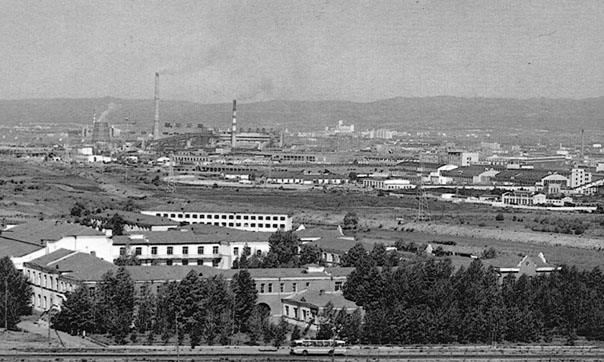| This Web book is based on public domain material provided by the US government and is available in several versions. See the editorial for more information. |

|

Home  The Economy The Economy  Industry Industry  Energy Energy |
|||
| See also: Mining, Natural resources | |||






|
|||
Energy
In the late 1980s, energy in Mongolia was provided primarily by coal-burning thermal and electric power stations. Other energy sources were hydroelectric power, wood, and imported gas and diesel fuel. Mongolia produced its own oil in the 1950s and the 1960s, but reports on oil exploitation ended in 1968. Increased electric power generation, made possible by the expansion of coal mining since the 1960s, powered the rapid development of industry after Mongolia's entry into Comecon. In 1960 when coal production was 618,800 tons, 106.4 million kilowatt-hours of electricity were generated. In 1985 coal production increased to 6.5 million tons, and electricity generation rose to 2.8 billion kilowatt-hours. Per capita electricity generation increased from 111.7 kilowatt-hours in 1960 to 1,487.3 kilowatt-hours in 1985. In 1985 electric power and thermal energy generation and the fuel industry accounted for 11.3 percent and 4.3 percent, respectively, of gross industrial output. In the late 1980s, despite the growth in power generation, Mongolia suffered from energy shortages. Electricity shortfalls interrupted the power supply for industries and households in urban areas, and many rural areas lacked electricity. The Eighth Plan called for increasing energy generation, extending rural electrification, and improving the efficiency of the energy industry by economizing on unit fuel consumption and by raising labor productivity. Specifically, the plan called for raising the generation of electric power to between 3.2 billion and 3.4 billion kilowatt-hours and thermal energy to 7.4 million to 7.6 million giga-calories by 1990. Capital investment in the energy industry was to amount to 2.7 billion to 2.9 billion tugriks. Extension of the centralized power supply and rural electrification were to occur by expanding facilities in Ulaanbaatar, by constructing power plants in Baga Nuur and Erdenet, and by building power lines to connect the cities of Arvayheer, Buyant-Uhaa, and Tsetserleg, and more than thirty somons. More remote areas were to install diesel-powered and coal-powered energy generating installations to meet their requirements.
|
|||
Home  The Economy The Economy  Industry Industry  Energy Energy |
|||
Last Update: 2010-12-07


